Driving or riding in bus lanes is permitted in some circumstances, but illegal use of a bus lane incurs 1 demerit point and a fine.
What does a bus lane look like?
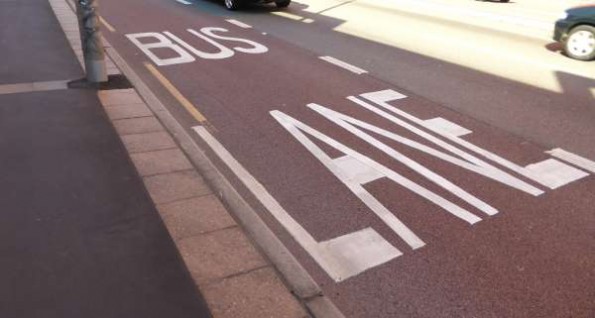
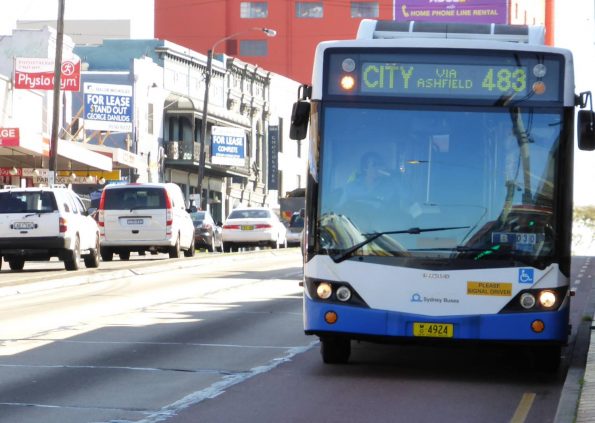
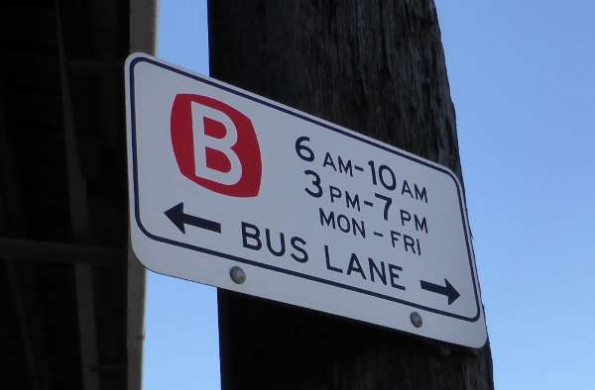
The end of the bus lane will be defined by painted markings on the road, or a sign like this.
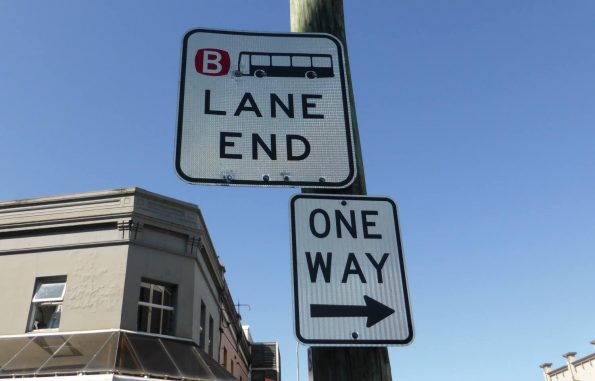
Types of bus lane
Bus-only lane, or buses only lane
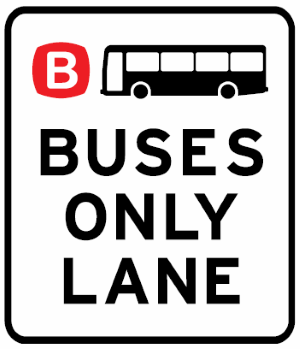
These lanes can only be used by buses will have a sign and/or painted markings. No other vehicles are allowed to use these lanes apart from special purpose, emergency services and authorised vehicles. They are usually separated from general traffic by a solid white line.
Turning left: You must move into the bus lane before you turn left to reduce the risk of turning across in front of the bus. You can do this up to 100m before you turn. It is essential you check your left mirror and blind spot before you move so that you don’t get hit by a bus.
Traffic lights on routes that have bus-only lanes sometimes have a B on the traffic lights, especially where the bus lane discontinues shortly afterwards, in order to give the buses a head start.

Bus lane
Regular bus lanes can also be used by motorcycles, bicycles, emergency vehicles, special purpose vehicles, taxis and hire cars (note: a hire car is different from a rental car).
This traffic can use a bus lane for up to 100 metres to turn right or left into or out of a street, enter or leave a property where the driveway is on the bus lane, to pass another vehicle that has stopped to turn right, or to avoid an obstruction.
Turning left: You must move into the bus lane to make a left turn into a side road or driveway. You are not permitted to turn left from the traffic lane next to the bus lane due to the risk of a bus in the bus lane hitting your vehicle. We believe the inconsistency in turning rules between bus-only and bus lanes is dangerous and confusing for motorists, so take care.
What time do bus lanes operate?
If no times are displayed, the bus lane is 24/7. If times are displayed, they are most commonly between 6am-10am and 3pm to 7 or 8pm.
Enforcement cameras in bus lanes and T-way lanes
Some bus lanes have two digital cameras installed beside them, mounted more than 100 metres apart. The cameras read the number plate of any vehicles using the bus lanes. If both cameras detect the same number plate of a non-authorised vehicle within a pre-defined time period, an infringement notice will be generated. Each camera takes two photos – a shot that details the vehicle’s number plate, and a shot that captures the wider context of the vehicle’s travel.
Exempt vehicles such as buses and motorbikes are removed during this process.
In a T-way lane, only one enforcement camera is required because non-authorised vehicles are not allowed to use the lane at all. Cameras on T-way lanes take three images.
Avoid being confused between a T-way and a T-lane (transit lane). You can travel with two people in a car in a T2 lane or three people in a T3 lane, but not in a T-way lane which is reserved only for buses and other authorised vehicles.
How far can you travel in the bus lane?
Australia has relatively lenient bus lane rules; in New Zealand they can only travel 50m in the bus lane when turning. To judge how far 100m is, it’s about 20 car lengths, or about the distance you would travel in 7 seconds at 50km/h.


